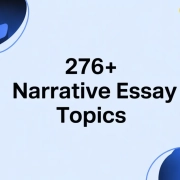Board-Ready Annual Report Writing Service — CFO-Friendly
The annual reporting season often creates significant pressure for leadership teams. Many executives find themselves buried in spreadsheets while trying to prepare for a critical board meeting. Finding a reliable board-ready annual report writing service can transform this high-stakes task into a streamlined process. This professional support allows you to present data with confidence and clarity. It ensures that every stakeholder receives the specific information they need to evaluate company performance effectively.
Key Takeaways
- Narrative over Numbers: Use a clear story to give context to your financial data.
- Visual Clarity: Replace dense spreadsheets with intuitive dashboards and graphs.
- Strategic Focus: Prioritize actionable insights that help the board make informed decisions.
- Built-in Trust: Transparency in reporting strengthens your credibility with stakeholders.
- Time Efficiency: Outsourcing the writing process allows leadership to focus on high-level strategy.
The High Cost of Numbers Without Context
Raw data often fails to tell the full story. Many reports focus heavily on a performance indicator without explaining the underlying cause. This lack of context leaves board members confused. They might see a graph showing revenue growth but miss the strategic drivers behind it.
Investors and directors require more than just a list of metrics. They need to understand how these numbers align with the broader vision of the organization.
- Financial Insights: These turn a static report into a tool for better decision-making.
- Strategic Alignment: Every data point should connect back to long-term goals.
Bridging the Gap Between FP&A Teams and the Boardroom
Internal finance teams often spend weeks inside Microsoft Excel. They track every data point and cash flow detail with precision. However, a busy board does not have time to audit every spreadsheet. They need a big-picture view that highlights the most important financial data.
A professional approach helps translate complex financial details into a clear narrative. This process ensures that the chief financial officer can focus on strategic guidance. It moves the conversation away from minor data points toward high-level results. Using a report writing help resource ensures your team stays focused on core operations.
The Blueprint of a Board-Ready Annual Report Writing Service
A board-ready annual report writing service provides the professional polish required for high-level governance. We will explore the specific elements of this service in the following sections. These details help you understand how to elevate your reporting standards for the next board meeting.
Moving Beyond Microsoft Excel: Visualizing the Financial Story
Heavy reliance on a spreadsheet can hide critical trends. Visual tools like a dashboard make it easier to see how the company is evolving. A well-designed graph can communicate more than ten pages of text. This visual clarity builds trust with diverse boards that have different areas of expertise.
- Executive Dashboards: These provide an immediate snapshot of organizational health.
- Visual Storytelling: Graphs help board members digest information quickly.
Effective visualization requires more than just colors and charts. It requires a deep understanding of what executives need to see. You must present data in a way that highlights the roi of various initiatives. If you require help with the structure of these documents, a format paper writing service can provide the necessary framework.
Scenario Planning and Performance Indicators: Giving Leadership the Big-Picture View
The board of directors focuses on future risks and opportunities. They value scenario planning that shows how the organization might handle market shifts. Reports should include KPIs that measure both past success and future potential. This approach provides your board with the right data to make smarter decisions.
Strong board reporting includes a mix of qualitative and quantitative information. You should highlight customer acquisition costs alongside general financials. These details allow board members to assess the health of the company. It helps them provide better financial oversight.
Why Financial Transparency is the Foundation of Board Governance
Transparency is essential for maintaining credibility with every stakeholder. A nonprofit organization must show exactly how funds are used to achieve its mission. A saas company must demonstrate clear growth paths to its investors. This level of honesty builds a strong board culture.
- Credibility: Honest reporting fosters a culture of accountability.
- Stakeholder Trust: Clear communication satisfies both internal and external observers.
Financial transparency is not just about showing the good news. It involves discussing challenges with honesty. This openness allows for better decision-making during board committees. It ensures that everyone is working from the same set of available data.
The Workflow of a Seamless Hand-off
Efficiency depends on a clear workflow. You should be able to hand off your data without constant back-and-forth emails. A professional service manages the complex financial details while you focus on leadership. This system reduces the time spent on manual edits.
- Streamlined Processes: A clear hand-off saves the leadership team significant time.
- Expert Oversight: Professional writers ensure the narrative remains consistent throughout.
You can save dozens of hours by delegating the narrative construction. The result is a board report that feels impactful and authoritative. Many leaders use a business report writing service to maintain this high standard throughout the year.
How to help your board make better decisions through actionable insights
A report is only useful if it leads to action. Your next board report should provide clear recommendations based on the data. It should identify which metrics are most relevant to current strategic decisions. This helps the effective board stay focused on the future.
- Data-Driven Decisions: Every insight should point toward a specific business outcome.
- Focused Metrics: Highlight only the data that impacts the bottom line.
Actionable insights require a deep expertise in your specific industry. You must deliver insights that drive real change. This ensures that every board meeting is productive. It helps the organization stay ahead of the competition.
Establishing a Reporting Cadence That Builds Long-Term Stakeholder Trust
Consistency is key to board governance. Setting a regular reporting cadence ensures that information flows steadily. This prevents surprises during the annual meeting. It allows board members to track progress over time.
Regular updates help align on strategy across the entire organization. They provide a sense of stability and professional management. This habit makes the annual report a summary of ongoing success rather than a stressful event.
Conclusion
The annual reporting process does not have to be a source of anxiety. By utilizing a board-ready annual report writing service, you ensure your financials are presented with maximum impact. This partnership allows you to present a financial story that is both accurate and persuasive. It gives you the freedom to lead while knowing your reporting is board-ready. Professional support helps you build trust and drive the organization toward long-term success.
Board-ready Annual Report Writing Service FAQs
What makes a report truly board-ready?
A board-ready report is concise and focuses on strategic outcomes. It avoids unnecessary jargon while highlighting the most important metrics for decision-making.
Can these services handle sensitive financial data?
Professional writers use secure workflows to protect your information. They prioritize data integrity and confidentiality throughout the entire reporting process.
Do I still need to provide the data if I hire a service?
Yes, you provide the raw numbers and the basic context. The service then handles the formatting and the narrative construction to make it professional.
How does professional writing improve board governance?
Clear reports reduce confusion during meetings. This allows the board to spend more time on strategy and less time asking for data clarifications.
With a passion for helping students navigate their educational journey, I strive to create informative and relatable blog content. Whether it’s tackling exam stress, offering career guidance, or sharing effective study techniques
academhelper.com academhelper.com
"Looking for a Similar Assignment? Get Expert Help at an Amazing Discount!"





